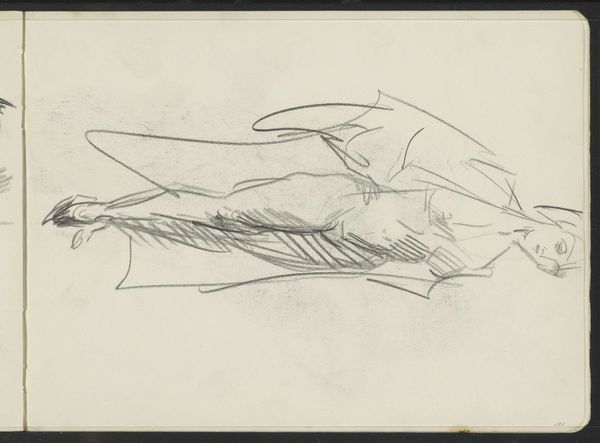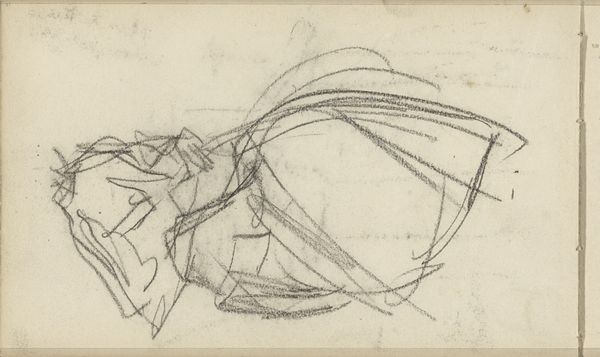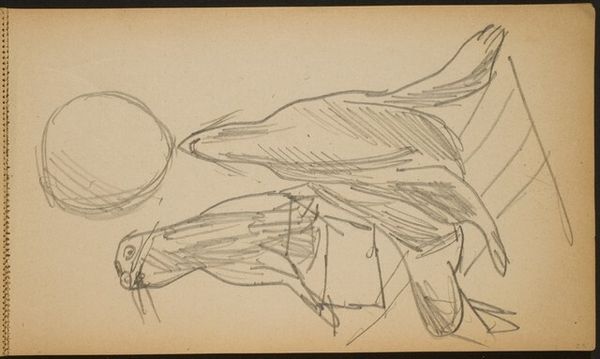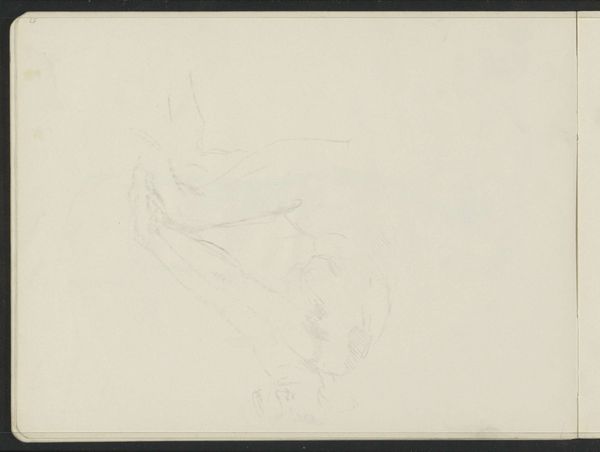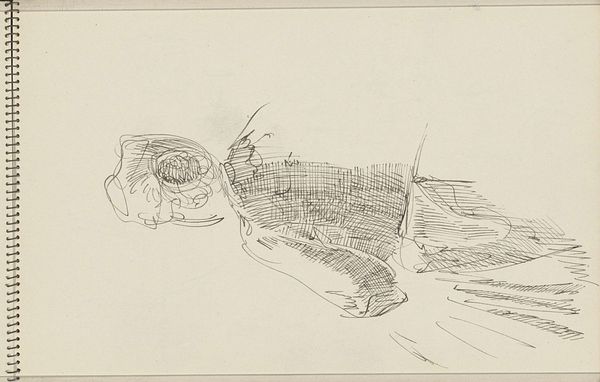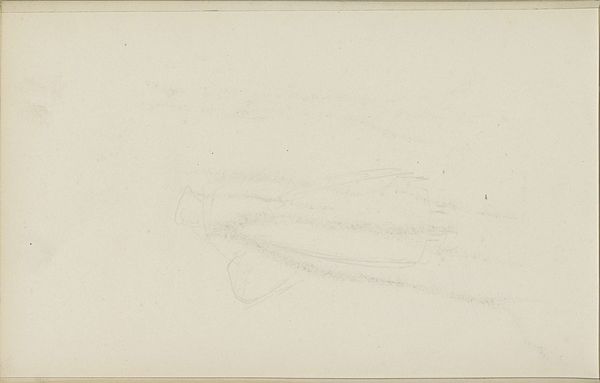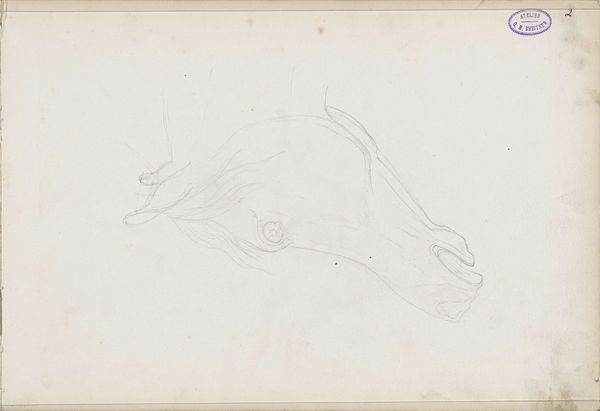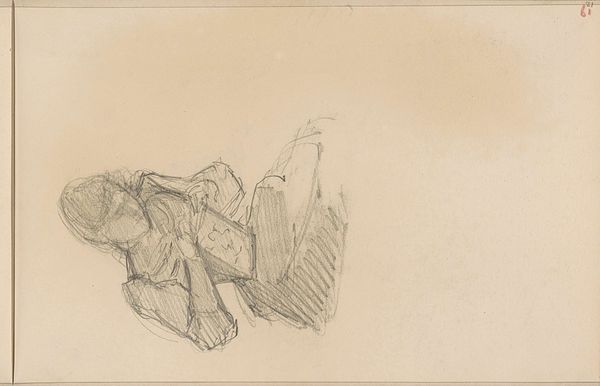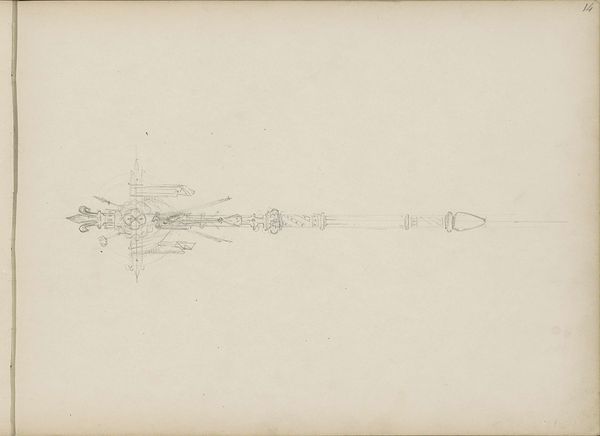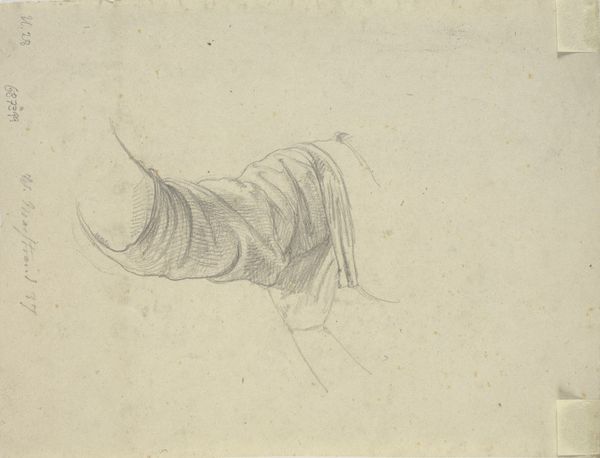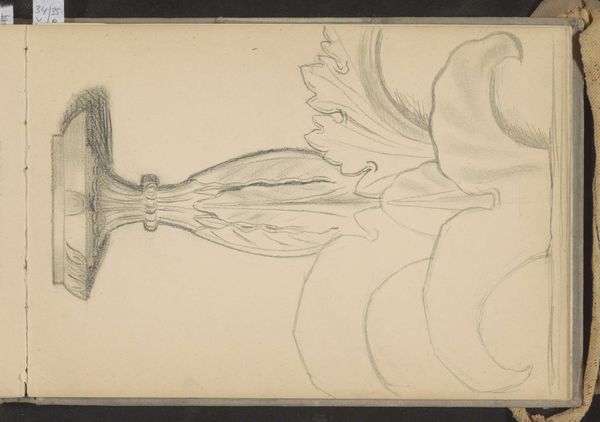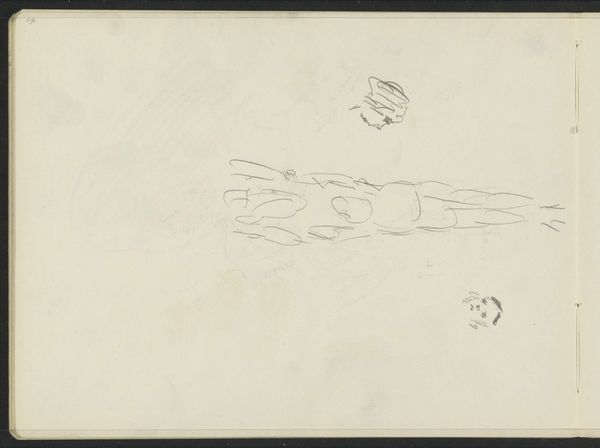
Romaans fresco van Christus in de Chapelle Saint Gilles te Montoire-sur-le-Loir 1869 - 1925
0:00
0:00
drawing, pencil
#
portrait
#
drawing
#
medieval
#
pencil sketch
#
pencil
Copyright: Rijks Museum: Open Domain
Antoon Derkinderen made this drawing of a Romanesque fresco depicting Christ in the Chapelle Saint Gilles in Montoire-sur-le-Loir. The figure, likely Christ, is draped in elaborate robes, embodying a divine presence through the rich fabric. The drapery's folds, a motif stretching back to ancient sculptures, here symbolize status but also conceal and reveal, adding an emotional depth to the sacred figure. Consider how similar drapery appears on sculptures of Roman emperors and Greek gods. Across cultures and centuries, this motif has evolved. It has been passed down through art history as a signifier of power and holiness. The gesture might evoke a complex interplay between conscious reverence and subconscious recognition of authority. The emotional intensity of the fresco engages viewers on a profound level. This is an example of the human desire to visualize the divine. The figure’s robes, a symbol with roots in antiquity, represent the cyclical nature of cultural symbols. They resurface through time, changing in appearance but forever linked by a shared history and subconscious power.
Comments
No comments
Be the first to comment and join the conversation on the ultimate creative platform.
